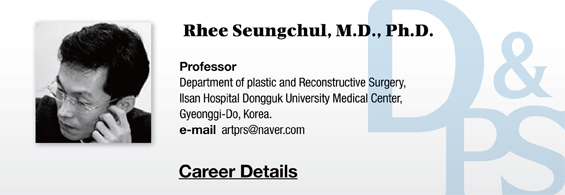
As I have repeatedly emphasized in my articles, classical facial analysis fail to provide any clarification in terms of soft tissue analysis of the facial profile as there are too many variations and errors in photographing the face or definition of landmarks. Traditional cephalometric analysis or photogrammetric analysis also use values obtained from average faces and cannot be applied to faces considered attractive today. I will abstain from reviewing all existing facial profile analysis methods here. We will discuss the most well-known and commonly used classical profile analysis methods to compare and contrast how the traditional values differ from my data. I would like to focus on angles of facial landmarks rather than lines or surfaces as angles are less susceptible to photographic distortion.
The nasolabial angle
The nasolabial angle is a very important aesthetic landmark for rhinoplasty or orthodontic procedures. The nasolabial angle can be measured in various ways but generally, it is the angle between the line from columella to subnasale (Sn) and the line from Sn to the upper lip (Ls). Bergman found that the ideal nasolabial angle for Caucasians was 102±8° [6].
A recent Croatian study reported this angle is 105.4±9.5° in men and 109±7.8° in women [7] and Legan and Burstone proposed 102±8° as the average nasolabial angle, finding no gender difference [4]. Burstone reported that the nasolabial angle was 74±8° in Caucasian adults [8]. A recent Korean study involving Miss Korea contestants found it to be 121.2±6.7° [9]. On the other hand, a Middle Eastern study reported the ideal nasolabial angle viewed as attractive by younger people was 89.5±3.5° in men and 90.8±5.6° in women [10].
HELIOSⅡ/LOTUSⅡ/HYPERION – Manufacturer: LASEROPTEK(www.laseroptek.com)
Young women saw 89.3±3.8° in men the most attractive and young men found 90.5±4.8° the most attractive in women. There are also many references of the ideal nasolabial angle for each race and ethnicity. In short, there are many widely differing reports on what is an ideal nasolabial angle for different races and ethnicities.
According to my findings on the preferences of today’s general public, the nasolabial angle found to be attractive was 101.8° in Caucasians and 109.5° in Asians (Image 2). It seems that Asians should have a slight cephalic rotation of the nasal tip than Caucasians to be considered attractive. This is quite different from the nasolabial angle of average Asians. It is not clear why this is preferred. It may be due to the widespread images of plastically enhanced celebrities, or disapproval of protruding mouth among Asians, or preference of a Caucasian profile. However, a standardized attractive Asian female face has more pronounced anterior and superior protrusion of the nasal tip and a more withdrawn mouth than an average face. One should consider that clearly visible nostrils from the frontal view of the face is not desirable. The desired nasolabial angle, however, does have a nasal tip that is more upward pointing and a mouth that is less protruding than an average face.

Image 2. An ideal nasolabial angle (Cm-Sn-Ls) is 109.5° in Asians and 101.8° in Caucasians.
-To be continued




















